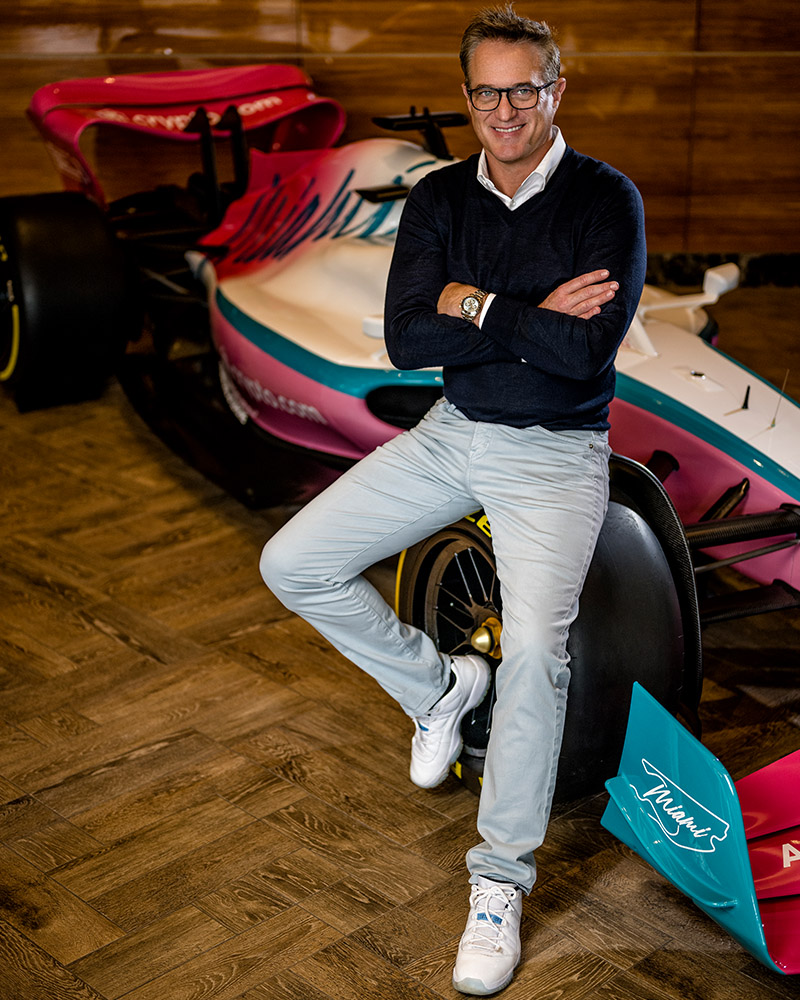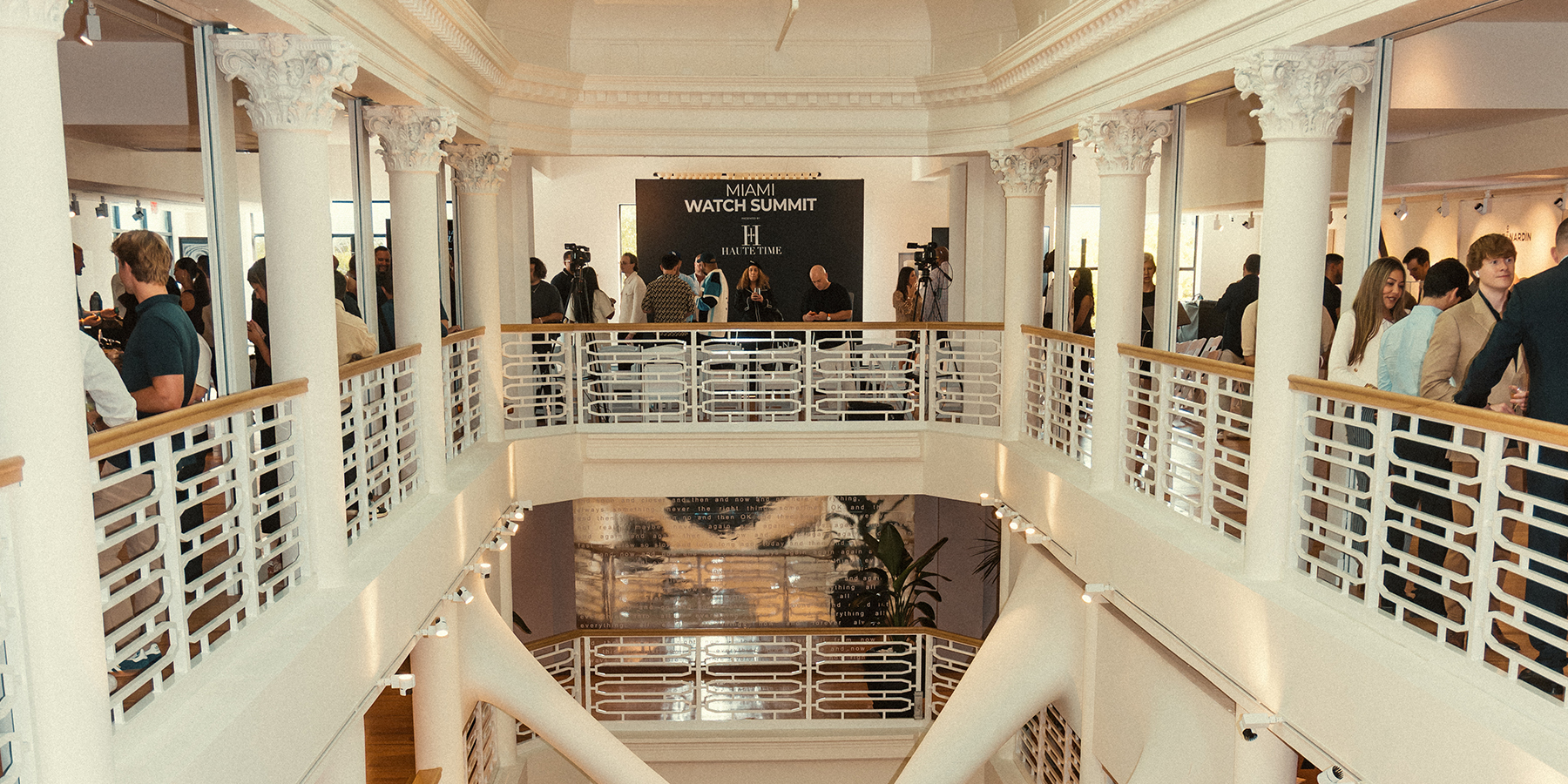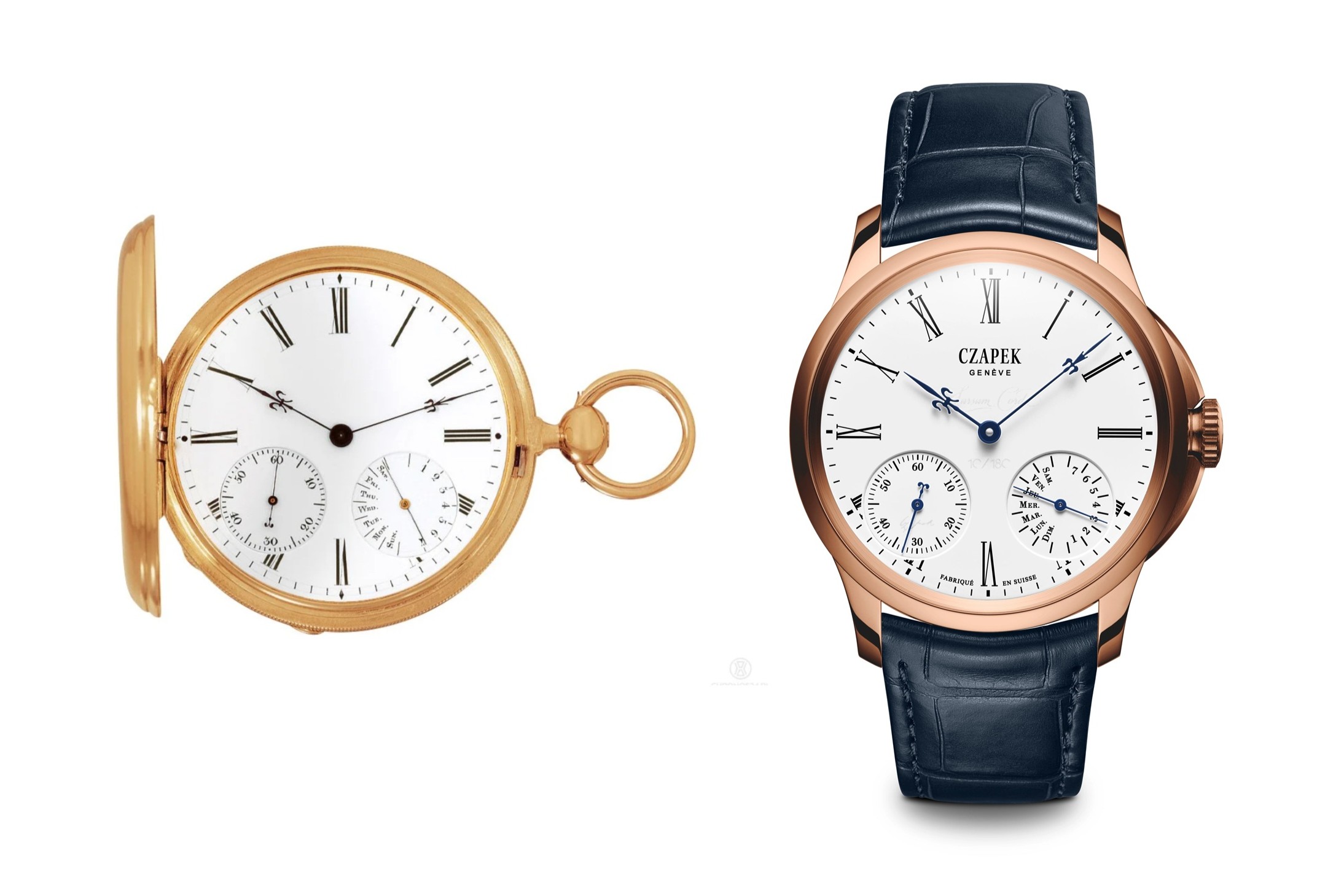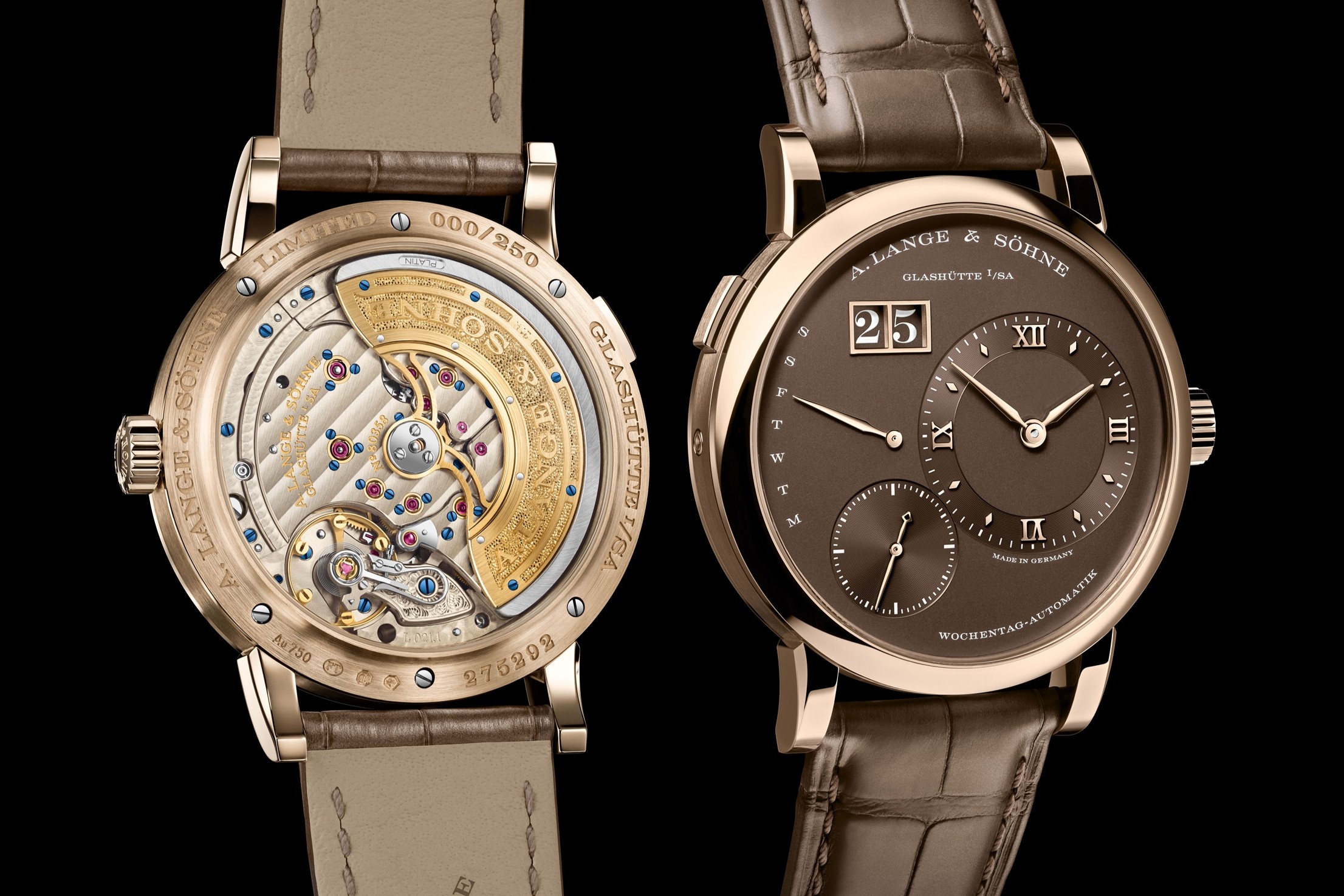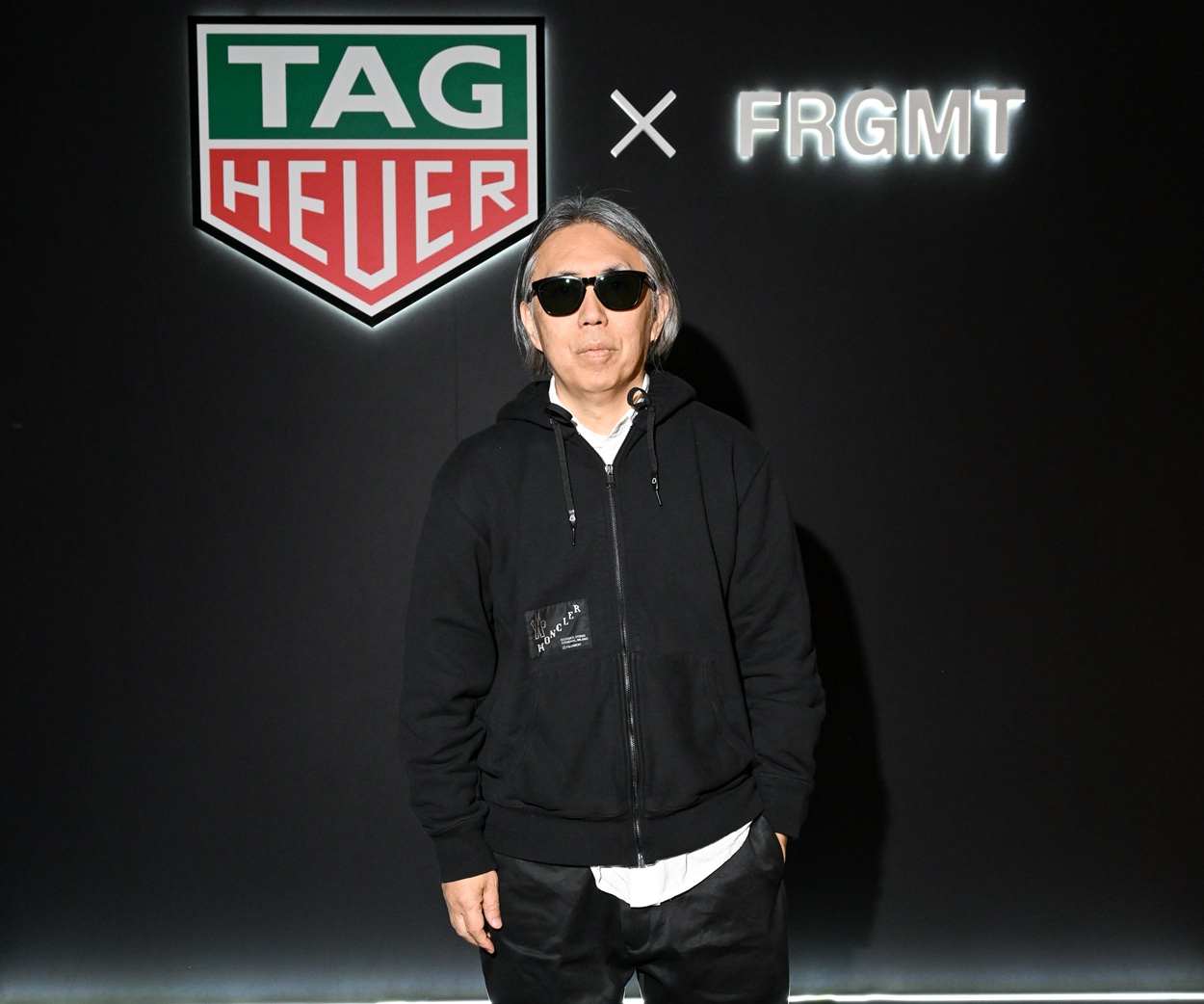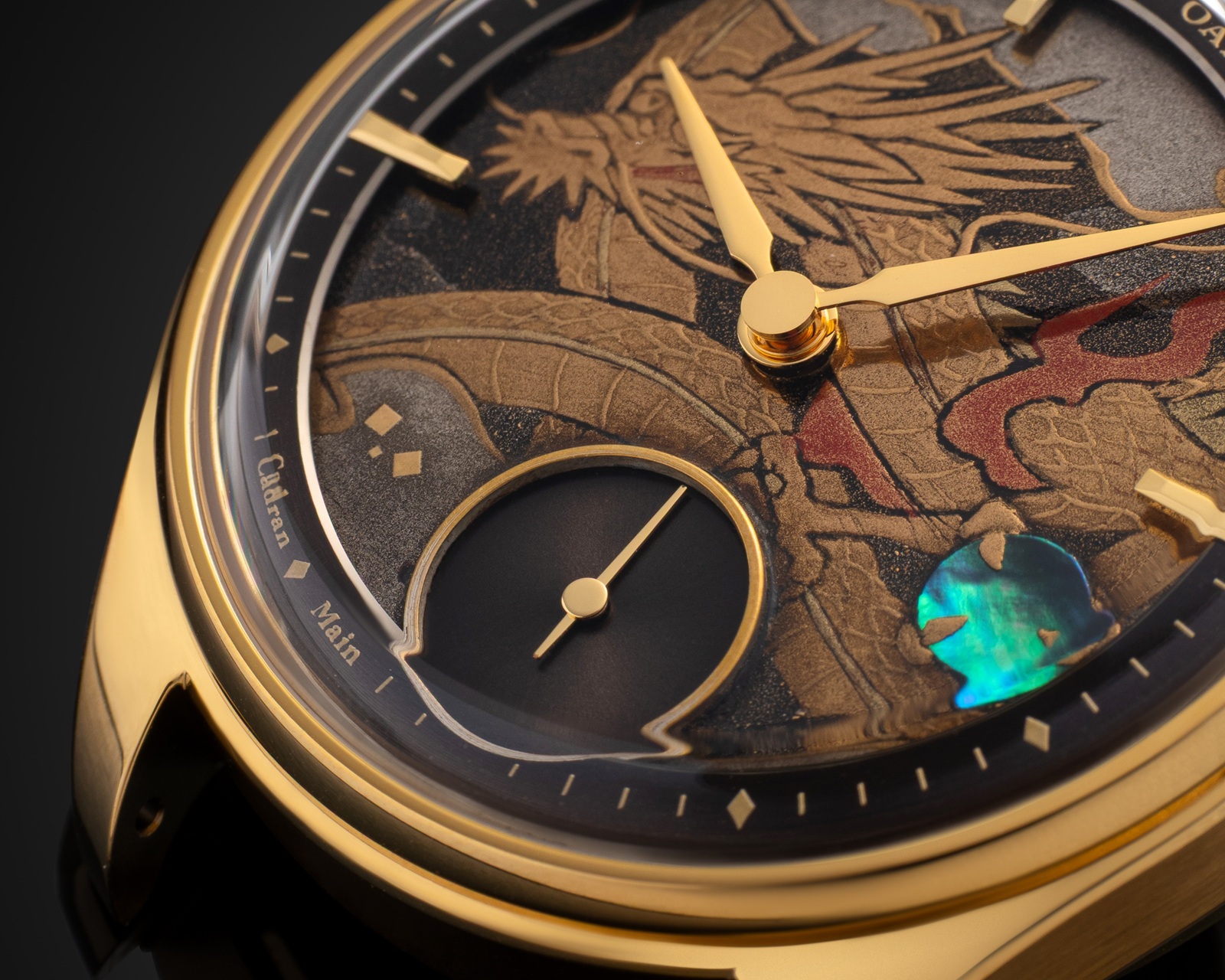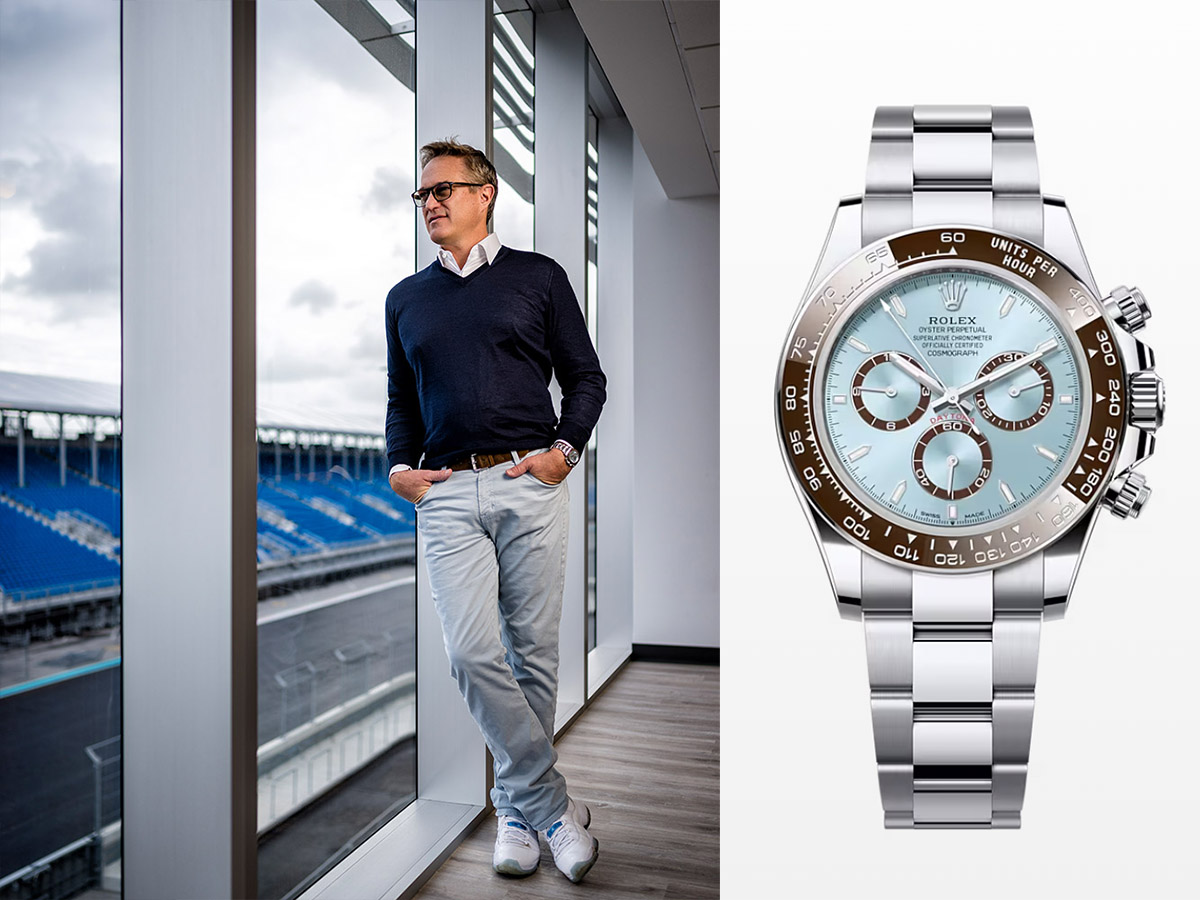
Tom Garfinkel On Transforming The Formula 1 Crypto.com Miami Grand Prix Race Experience — Wearing The Ultimate Race Watch
For Tom Garfinkel, Formula 1 Crypto.com Miami Grand Prix managing partner and vice chairman, president, and CEO of the Miami Dolphins and Hard Rock Stadium, racing has always been an integral part of life. In fact, he met his wife over 20 years ago at the Miami Grand Prix when he worked for the race’s sponsor, Texaco. Today, he is at the helm of the Formula 1 Crypto.com Miami Grand Prix, catapulting the race experience into a new echelon. Just ahead of the second-ever Formula 1 Crypto.com Miami race this weekend, Haute Time sits down with Garfinkel to find out what we can expect this year and how he plans to continue to evolve the race and forever impact the city of Miami.
HAUTE LIVING: What can we expect as we approach the second year? How has the venue evolved; what are the new offerings, experiences, etc.?
TOM GARFINKEL: The first year went really well, especially given the [short] time frame we were working around. Some constraints caused some aspects of the experience to be less than ideal, so coming into the second year, we have tried to address those things. For example, last year, we had a temporary Paddock Club building — because of the timeframe, we were unable to build the proper building, so in the off-season, we built a brand-new, 190,000- square-foot, state-of-the-art permanent Paddock Club.
We’ve also repaved the racetrack, which we will not be doing every year. We weren’t happy with where the track was last year regarding its raceability, so we wanted to improve that by repaving. We created the Vista at Turn 1, which will now be air-conditioned with outdoor seating, and The Villas are different this year, [presenting] as a contained unit versus individual units. The Yacht Club will have fewer yachts, but we have created pools this year, curating an Ocean Reef pool vibe with cabanas. The Palm and 72 structures have also been upgraded a bit. While there is more space in the luxury hospitality spaces, the general capacity and attendance have only grown by 5,000. We could have grown it substantially based on the demand. Still, for me, it is more important to keep it smaller so we can focus on getting people in and out effectively, with the proper number of points of sale, bathrooms, etc. to avoid lines and create the most premium experience.
HL: Can you walk us through the brand-new Paddock Club? What has been elevated?
TG: The Paddock Club will be a great experience this year. We increased the size of the Paddock itself, moving the team hospitality to the stadium field — almost like a piazza or village for the Paddock on the field — with big screens. Guests with campus passes can access the 300-level seats to look down on the Paddock, which I think will be unique. In addition, we built an entirely new, permanent three-tier Paddock Club building with incredible views of the track, and we have changed the food provider to Do & Co.
HL: What was your main goal in approaching this year after learning last year’s key takeaways?
TG: The main goal was simple: to improve the things that needed improvement and not mess up the things that worked well. This year, we were given the time we weren’t [given] last year to fix certain things that we could have simply done better or differently. We did a lot of surveys with our customers immediately following the race last year, and we listened. Intuitively, we also knew there were things that we wanted to do last year but could not get to, so this year, we did them. We made a major investment in building the permanent Paddock Club building and doubling the sizes of the pedestrian bridges — we’ve really invested in the long-term experience for the fans, the teams, drivers, and sponsors here at the Formula 1 Crypto.com Miami Grand Prix.
HL: What has changed in the last year sporting-wise — we know the track has been repaved; did F1 request any other updates to improve the track?
TG: We met with the FIA after the race last year to talk about the run-off space and realized after looking at the sims that there was a lot of unnecessary run-off space. Some run-off spaces have become smaller this year, notably at Turn 5. The Turn 5 Suites [are in] a much bigger — and nicer — building this year that is closer to the track; in fact, you may recognize it as the former Paddock Club. We also had in-depth conversations with the teams and drivers about the track, and the consensus was to basically leave it the same with minor tweaks, as it got great layout reviews. Also, the FIA did not demand the repave of the track; it was more us saying let’s get this right.
“Miami is a curator of culture, fashion, music, art, sports, and the hospitality industry, and we try to encompass all of those things during the race experience.”
HL: With an incredible first year under your belt in terms of supporting Miami locally, how do you plan to further create a positive impact on the city?
TG: I am proud that it does help the Miami economy and people throughout Miami Gardens. Everything Stephen Ross has done with the stadium — the hundreds and millions of dollars he has poured into it — has really helped the vibrant dynamic of Miami. This year, we are working with 14 local, minority-owned restaurants to showcase their cuisine on a global stage, and we also do a lot within the community with F1 in schools and STEM programs. Miami is a curator of culture, fashion, music, art, sports, and the hospitality industry, and we try to encompass all of those things during the race experience.
HL: This year, you impressively committed to phasing out 99.4% of fan-facing single-use plastic — how did you find a solution?
TG: It started with the idea that we wanted to eliminate plastic straws, and I said, “Why don’t we just get rid of everything?” The team came into the conference room with one example of every single-use plastic we used at the stadium, and it filled the boardroom table. After that, we found many alternative solutions, like replacing plastic with aluminum water bottles and using bamboo plates and utensils. Frankly, it does cost more, but we wanted to set an example for other stadiums, proving if we could eliminate [an estimated] 300,000 plastic water bottles equating to millions of pieces of plastic a year, we would make a major impact.
HL: There’s no denying that Miami is at the forefront of evolving the Formula 1 race experience — what are your goals for the next few years with the race?
TG: We are certainly having meetings already about next year — I think the first few years, the focus is centered around how we can get better logistically and operationally every year versus innovating. It’s probably every three or four years when you can start to innovate and introduce new concepts; however, in the first few years, we really want to take each success and improve on it operationally to create an extraordinary experience. I was just listening to an audio this morning where someone mentioned [that the] difference between good and great or a 4-star and 5-star restaurant is enormous in terms of the attention to detail that is required. So, we want to take the amount of work that it takes operationally to get it where this race experience is best in class.
HL: What do you most look forward to as the race approaches?
TG: There is a mini tradition we started last year where I was able to drive the first lap around the racetrack the week of the race in a McLaren car with Stephen Ross, who has invested tremendously to make this race best in class. It was such a special experience that we will continue the tradition this year. Also, the first time the cars take the track on Friday is always really exciting, and when the flag drops on Sunday. These are the most rewarding moments, as you can truly see how many people are involved and how hard the teams work for this to come together. We are racing against the clock to get it done, so these monumental moments of race week are very rewarding.
ON THE SHOOT:
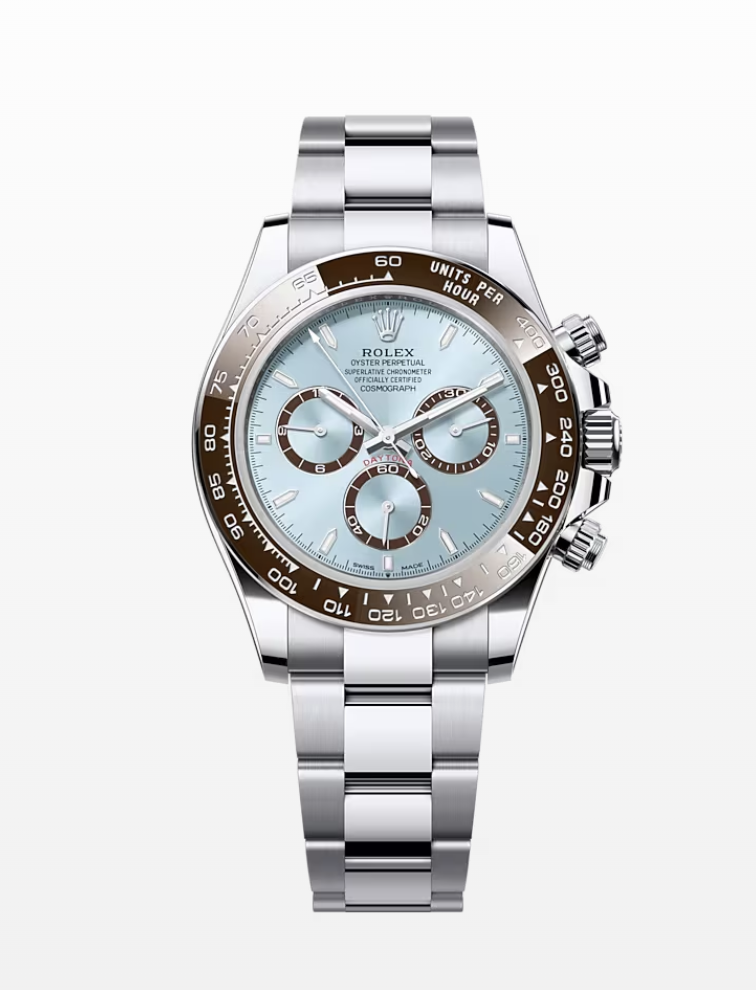
Photo Credit: Courtesy of Rolex
 SIGN UP
SIGN UP

